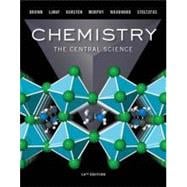For two-semester general chemistry lab courses
Introducing basic lab techniques and illustrating core chemical principles
Prepared by John H. Nelson and Kenneth C. Kemp, both of the University of Nevada, this manual contains 43 finely tuned experiments chosen to introduce basic lab techniques and to illustrate core chemical principles. In the 14th Edition, all experiments were carefully edited for accuracy, safety, and cost. Pre-labs and questions were revised and new experiments added concerning solutions, polymers, and hydrates.
Each of the experiments is self-contained, with sufficient background material, to conduct and understand the experiment. Each has a pedagogical objective to exemplify one or more specific principles. Because the experiments are self-contained, they may be undertaken in any order, although the authors have found in their General Chemistry course that the sequence of Experiments 1 through 7 provides the firmest background and introduction. The authors have included pre-lab questions to answer before starting the lab. The questions are designed to help in understanding the experiment, learning how to do the necessary calculations to treat their data, and as an incentive for reading the experiment in advance. These labs can also be customized through Pearson Collections, our custom database program. For more information, visit https://www.pearsonhighered.com/collections/








